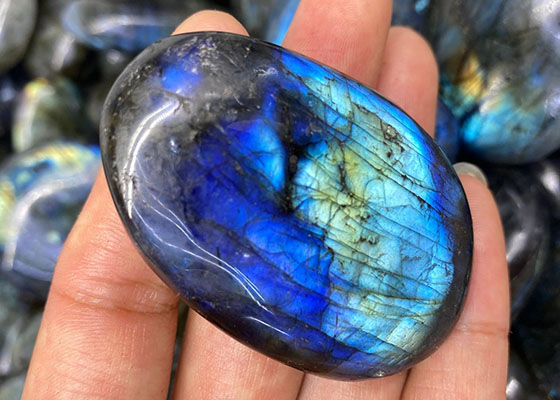Real vs Fake Labradorite: How to Tell the Difference
Labradorite is a beautiful and mystical gemstone that has been used for centuries in jewelry and other decorative items. It is known for its unique iridescence, which gives it a captivating and otherworldly appearance. However, as the demand for labradorite has increased, so has the prevalence of fake or imitation labradorite in the market. In this post, we’ll explore the differences between real and fake labradorite, how to tell them apart, and why it matters.
What is Real Labradorite?
Real labradorite is a mineral that belongs to the feldspar group. It is composed of a mixture of different minerals, including albite, anorthite, and labradorite. What makes labradorite unique is its iridescence, which is caused by the scattering of light within its internal structure. This effect, known as labradorescence, creates a beautiful play of colors that shifts as the stone is moved.
Labradorite is found in many parts of the world, including Canada, Madagascar, Norway, and Russia. The quality of labradorite can vary depending on its origin and the specific minerals present in the stone. Some of the most desirable labradorite specimens come from Madagascar, where they have a high degree of transparency and a deep, rich color.
There are different grades of labradorite, each with its own characteristics. The highest grade is known as “spectrolite” and is characterized by intense and vibrant colors that shift as the stone is viewed from different angles. Other grades of labradorite include “rainbow labradorite,” “blue labradorite,” and “white labradorite,” each with its own unique color and iridescence.
What is Fake Labradorite?
Fake labradorite, also known as “imitation” or “synthetic” labradorite, is a man-made material that is designed to look like real labradorite. It is made using different types of glass or resin, which are often combined with other materials to create a similar appearance to labradorite. Some manufacturers also use a thin layer of labradorite or other minerals to create a veneer over a different material.
There are different types of fake labradorite, each with its own characteristics. Some are made using colored glass or resin that is mixed with metallic particles to create a similar iridescence to labradorite. Others are made using a thin layer of labradorite that is glued onto a different material, such as plastic or metal.
How to Tell the Difference Between Real and Fake Labradorite
There are several ways to tell the difference between real and fake labradorite. Some of the most common methods include:
- Visual cues: Real labradorite has a unique iridescence that cannot be replicated by any other material. When viewed under a light source, it will display a range of colors that shift as the stone is moved. Fake labradorite, on the other hand, may appear dull or lack the same range of colors.
- Magnet test: Real labradorite is not magnetic, so if a magnet is attracted to a piece of labradorite, it is likely fake.
- UV light test: Real labradorite may fluoresce under UV light, depending on its specific composition. If a stone does not fluoresce under UV light, it may be fake.
It’s worth noting that some fake labradorite can be difficult to detect using these methods, especially if it has been crafted to mimic the appearance of real labradorite. If you’re in doubt about the authenticity of a piece of labradorite, it’s always best to consult with a professional gemologist. If you want to purchase wholesale Labradorite jewelry online, you can trust this website wholesalejewelryusa.com,this website wholesales genuine stone jewelry.
Why it Matters
Knowing the difference between real and fake labradorite is important for several reasons. For one, labradorite is a valuable and sought-after gemstone, and fake labradorite is often sold at a lower price than the real thing. If you’re not careful, you may end up paying for a piece of jewelry or other item that is worth much less than you thought.
Additionally, the rise of fake labradorite has raised ethical concerns in the gemstone industry. Some manufacturers and sellers may pass off fake labradorite as real in order to make a profit, which can be misleading and dishonest. This can also have a negative impact on the reputation of the gemstone industry as a whole, which relies on trust and transparency to function.
By being able to distinguish between real and fake labradorite, you can ensure that you’re getting what you pay for and support ethical and sustainable practices in the gemstone industry.
Conclusion
Labradorite is a beautiful and unique gemstone that has captivated people for centuries. However, with the rise of fake labradorite in the market, it’s important to be able to tell the difference between real and fake labradorite. By knowing what to look for and using simple tests, you can ensure that you’re getting a genuine piece of labradorite and supporting ethical and sustainable practices in the gemstone industry.
If you’re in doubt about the authenticity of a piece of labradorite, it’s always best to consult with a professional gemologist who can help you determine whether it’s real or fake. With a little knowledge and care, you can enjoy the beauty and magic of labradorite for years to come.
